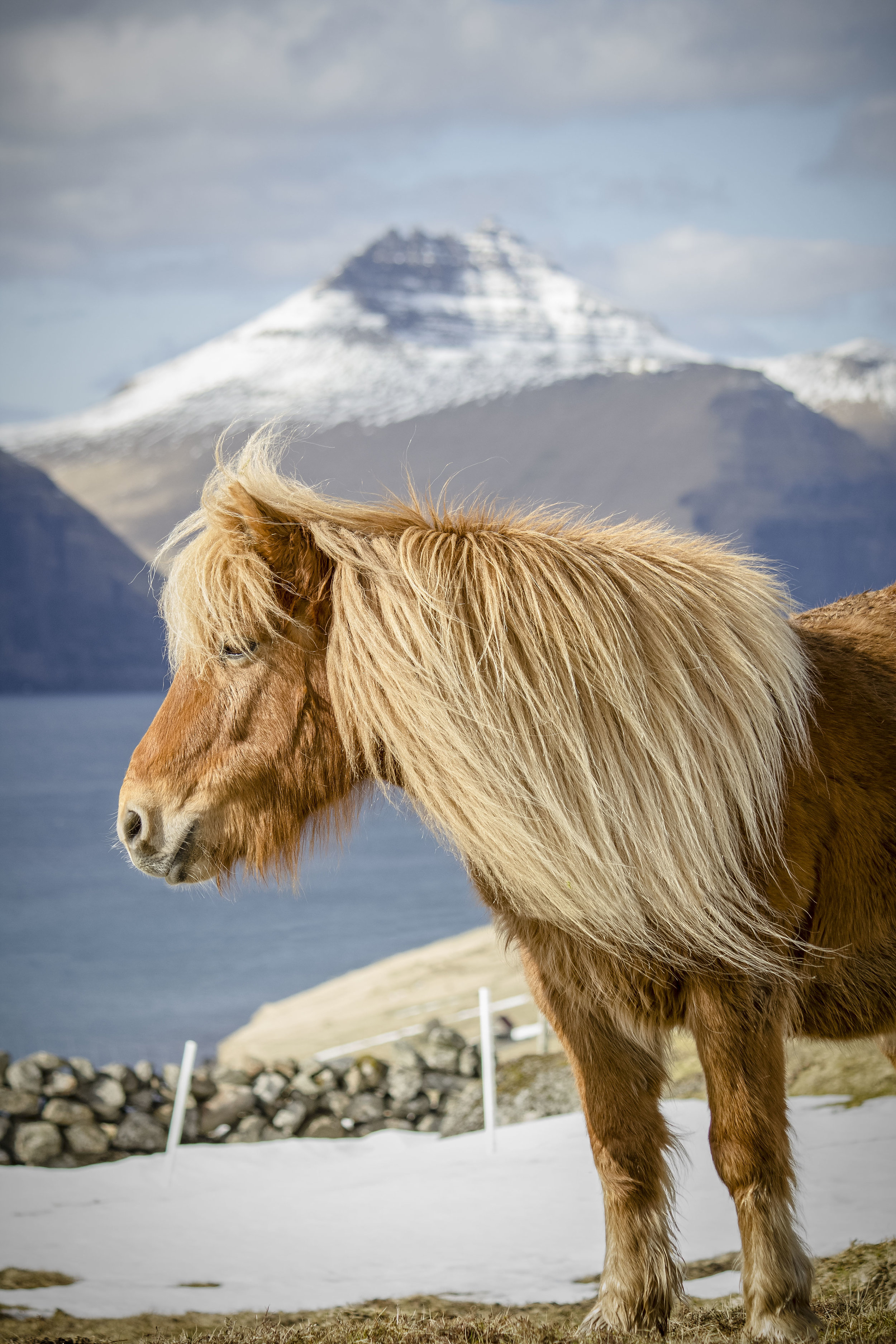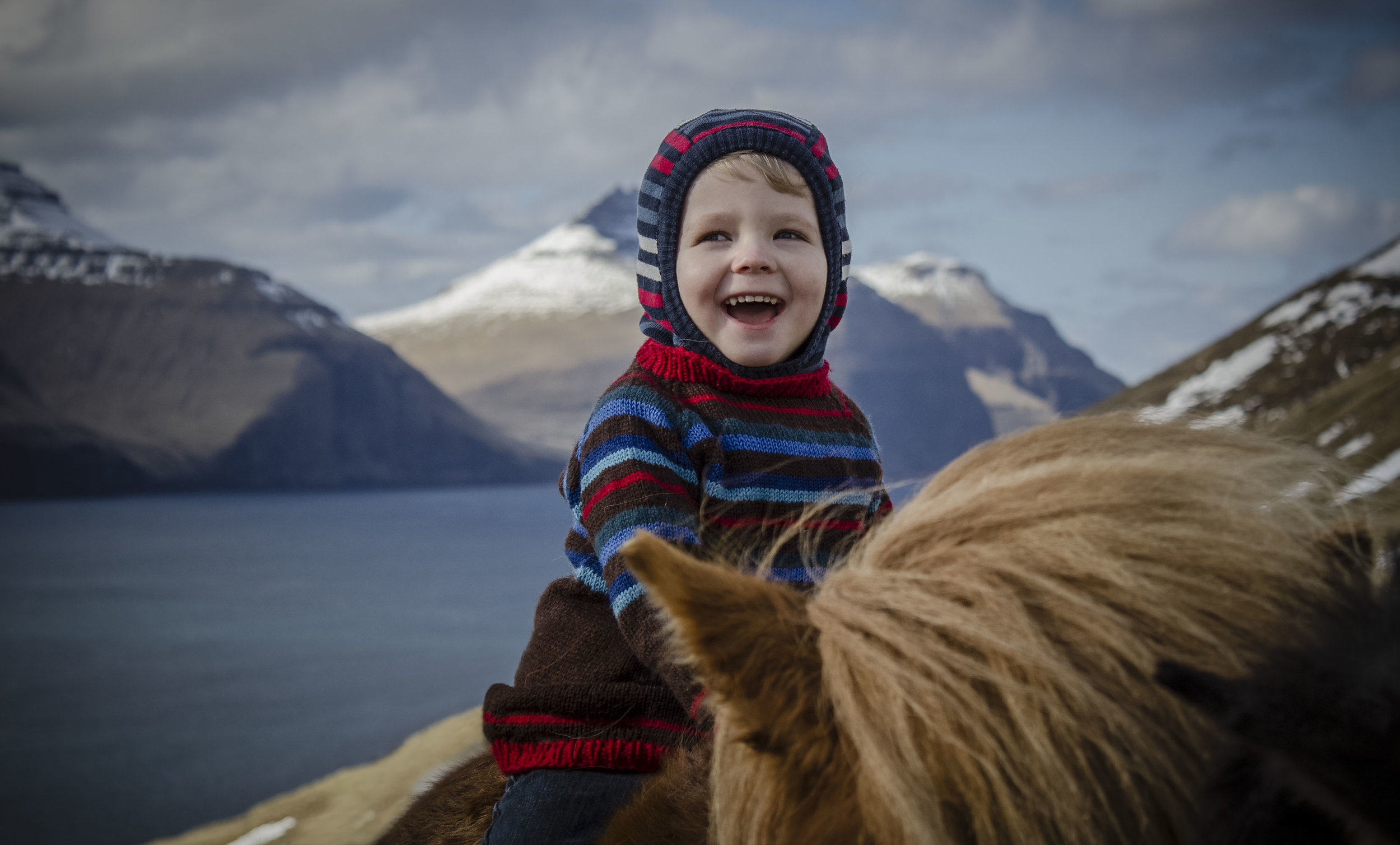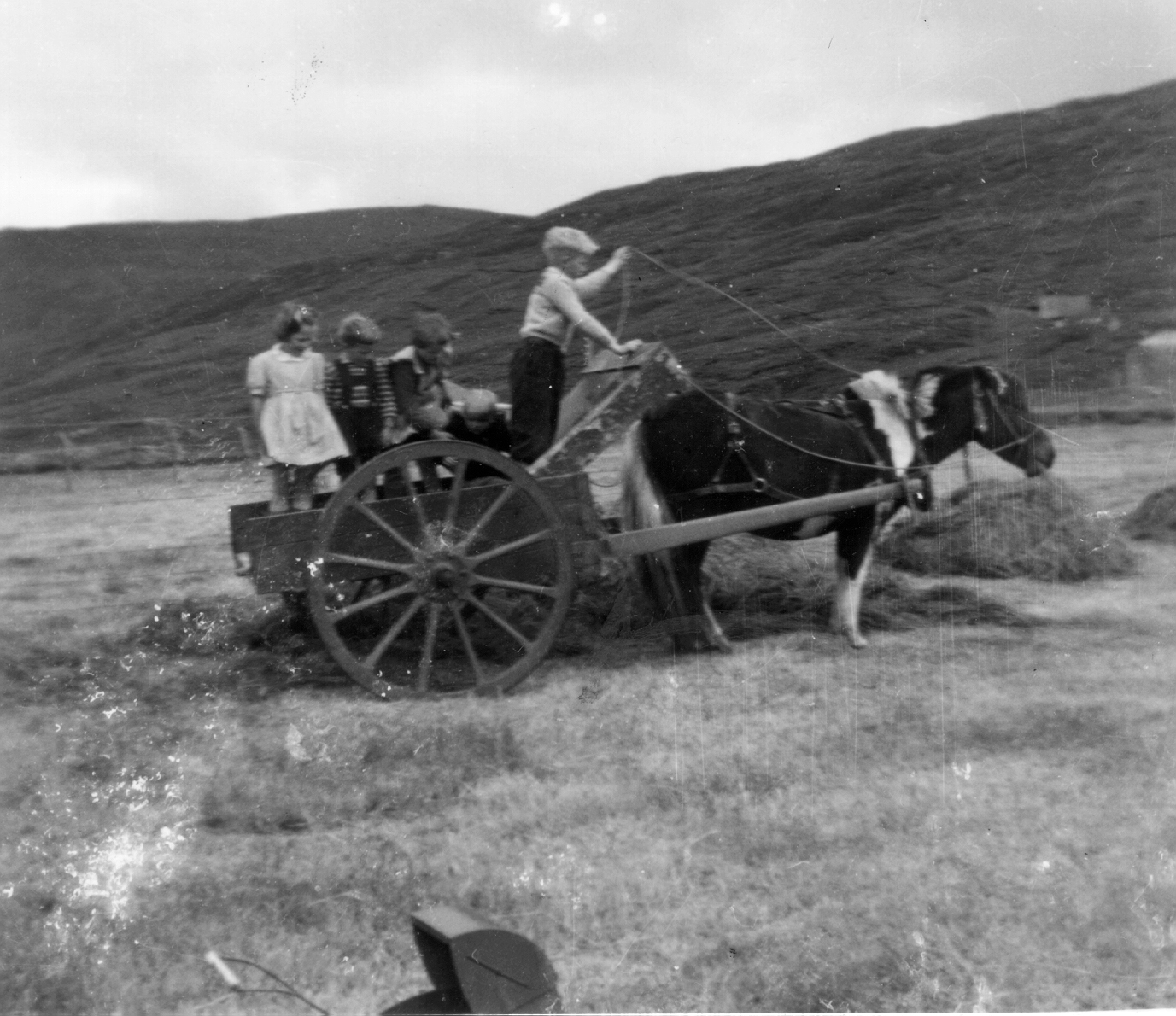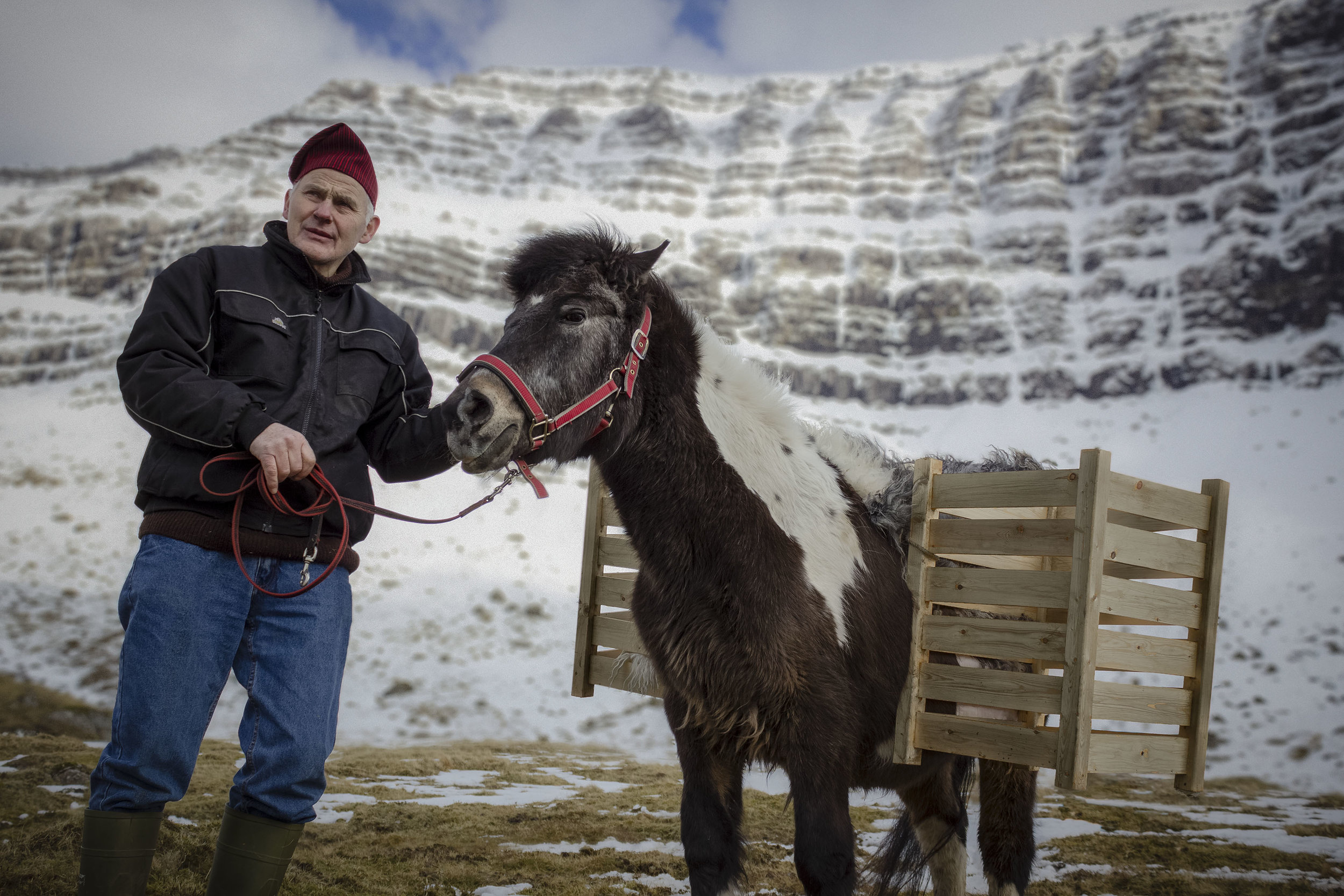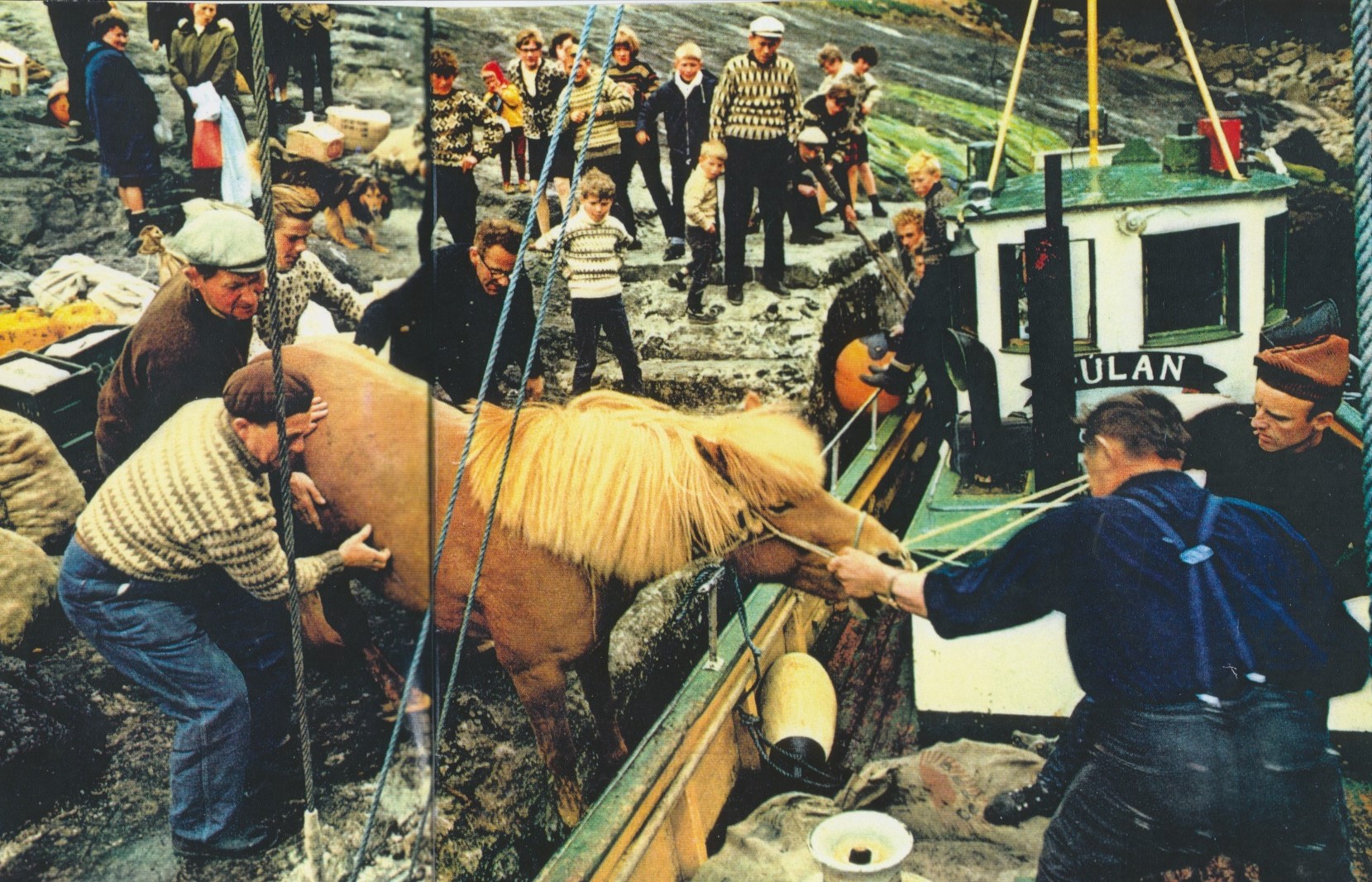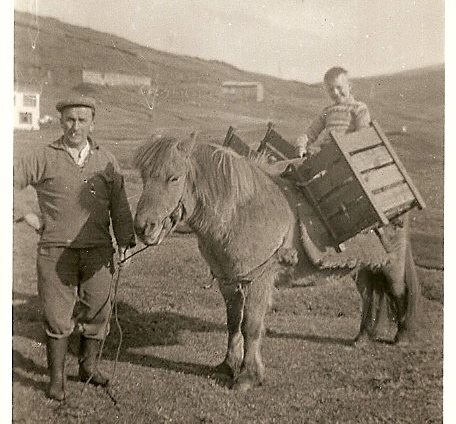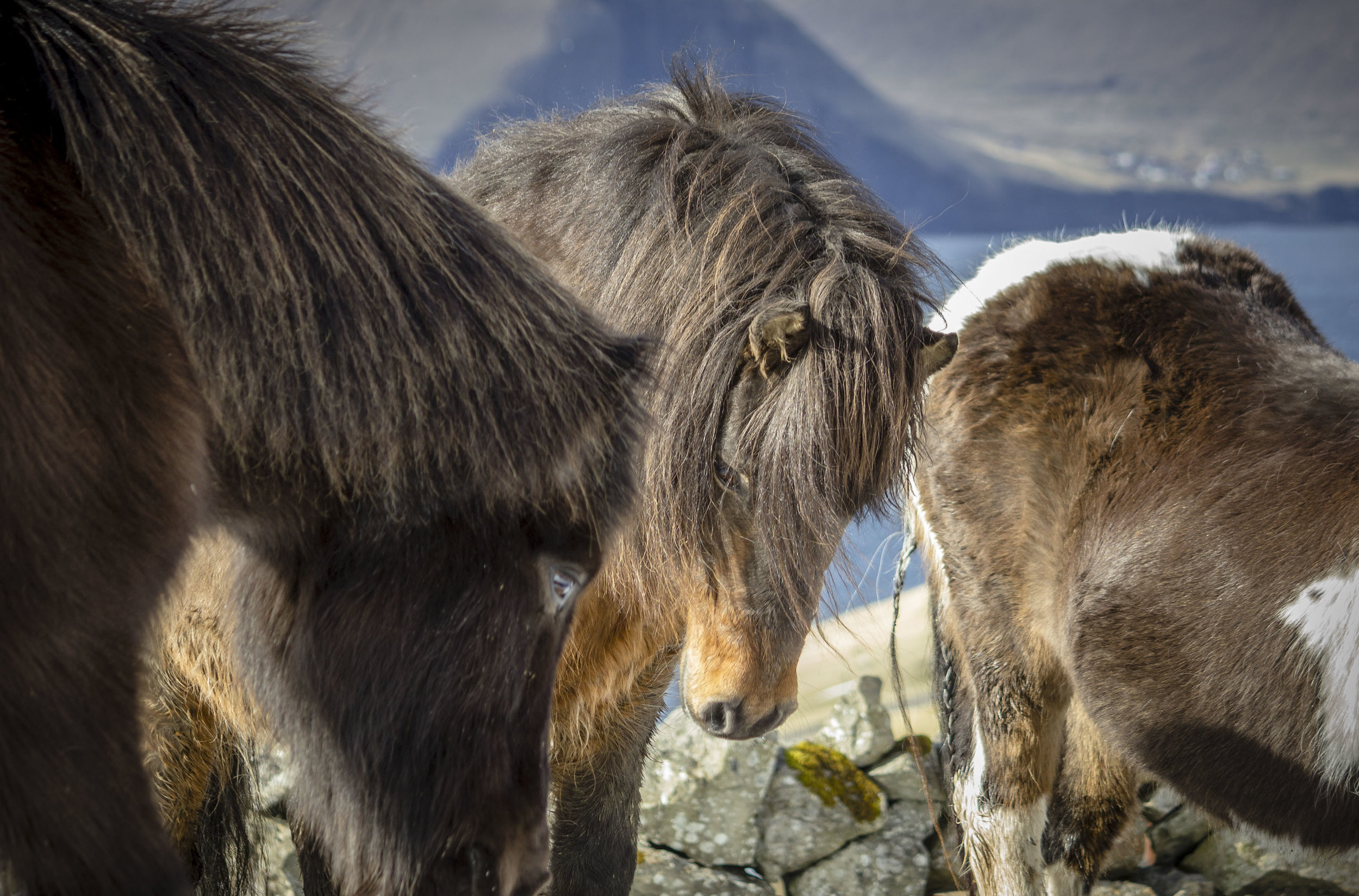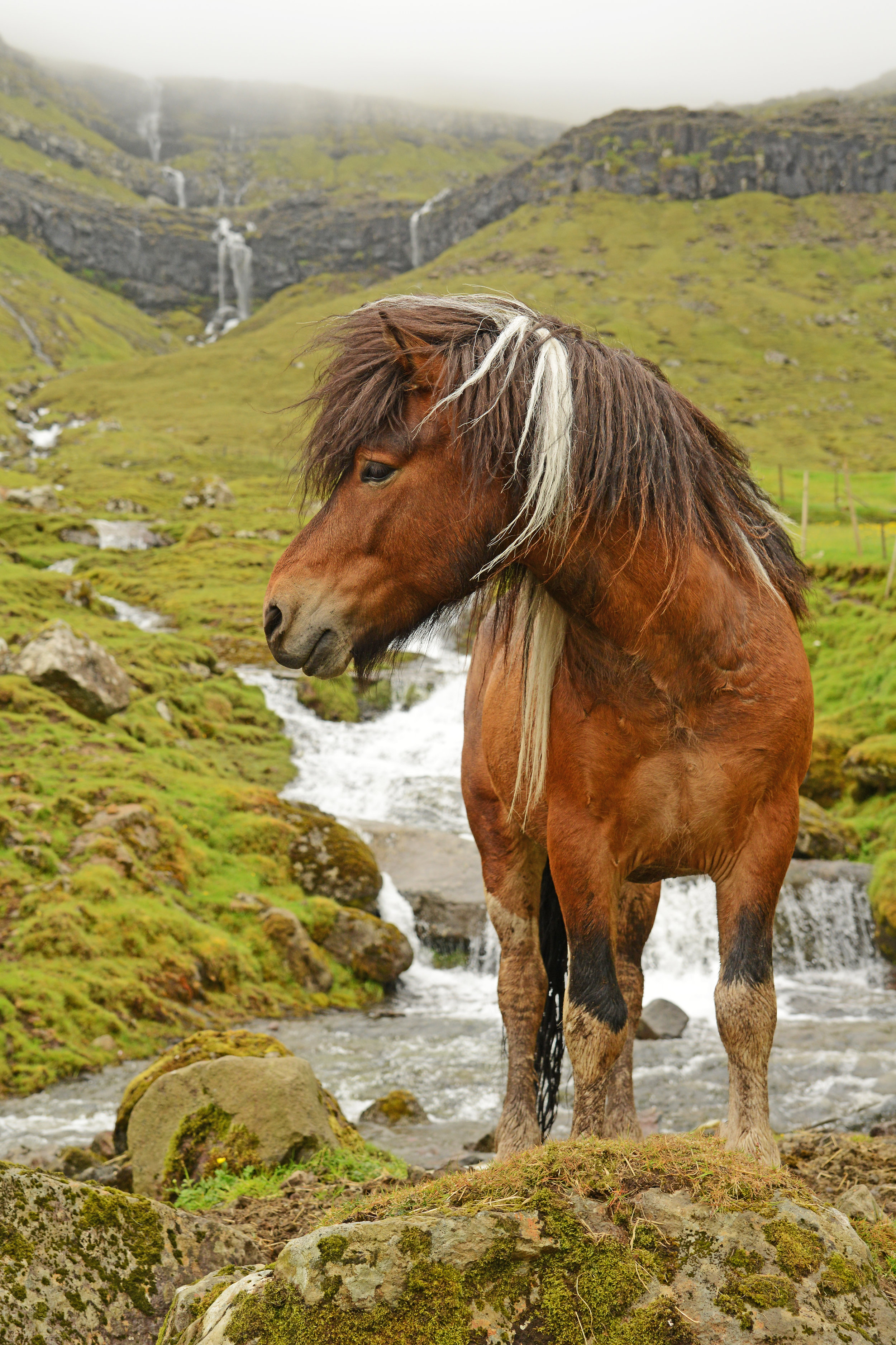
The Faroese Horse
There have always been horses on the Faroe Islands. The geographical remoteness in the North Atlantic Ocean forced the Faroese horse to adapt to its surroundings. Only the horses that could withstand the weather survived and the Faroe Islands became home to horse breed that was strong, hardy and agile.
There were 800 horses in the Faroe Islands in the early 18th century, but towards the later half of the century people began to export a lot of Faroese horses. Most of the horses were sold to the British to work in the coal mines and some were sold as saddle horses to upper class children. When people began using plough and carriage, they did not think that the Faroese horse was strong enough to pull these heavy foreign tools. A decision was needed but there was a lot of discussion back and forth. Some people thought that the fastest and best decision was to import stronger horses from Norway and mate them with the Faroese horses, while other people suggested a careful mating selection using the strongest Faroese horses and a halt to the export was a safer decision despite being a slower process.
The result of the discussion was that several large stallions arrived from Norway, mostly Fjord horses, but also some Døle horses. The mixed breed horses that were result of this were larger and stronger than the Faroese horse, but they were more vulnerable to the Faroese winter and died during the spring.
The long period of interbreeding with the Norwegian horse led people to believe that the Faroese horse had died out by the 1950s. However, it was still alive.
Felagið Føroysk Ross (an association to preserve the Faroese indigenous horse) was established in 1978. The association realised that if any indigenous horses remained, they could only have stemmed from four individual horses in the Faroe Islands. Blood samples were taken from the 13 descendants of the four horses and sent to Sweden for examination. The findings concluded that the Faroese horse was a separate breed.
Ever since, Felagið Føroysk Ross association has worked to establish a DNA database containing frozen horse semen and to conduct a genetic analysis of the Faroese horse. DNA analyses in 2003 verified the results from 1978 and indicated the closest genetic relationship with the Icelandic horse.
Felagið Føroysk Ross has kept the studbook of origin for the Faroese horse breed since 1978, and blood samples have been taken of the registrated horses, to keep the breed pure. In 2018, the system Føroya Fongur was created in partnership between Felagið Føroysk Ross and Bændasamtök Íslands. Føroya Fongur is the original family tree and the digital registration system for the Faroese horse breed, in which online access is provided to the studbook with extensive information about the Faroese horse breed. The database provides information on origin, offspring, breeding, colours, microchip numbers, photos and much more.
The Faroese horse breed is going from threatened to thriving, and you are only a few steps away from entering Føroya Fongur where you can follow the population and all the latest trends.

